On July 20, Monad Chinese’s first offline event was held in Hong Kong.
Community members, VC practitioners, and project founders gathered together, and everywhere they looked, they saw MEME.
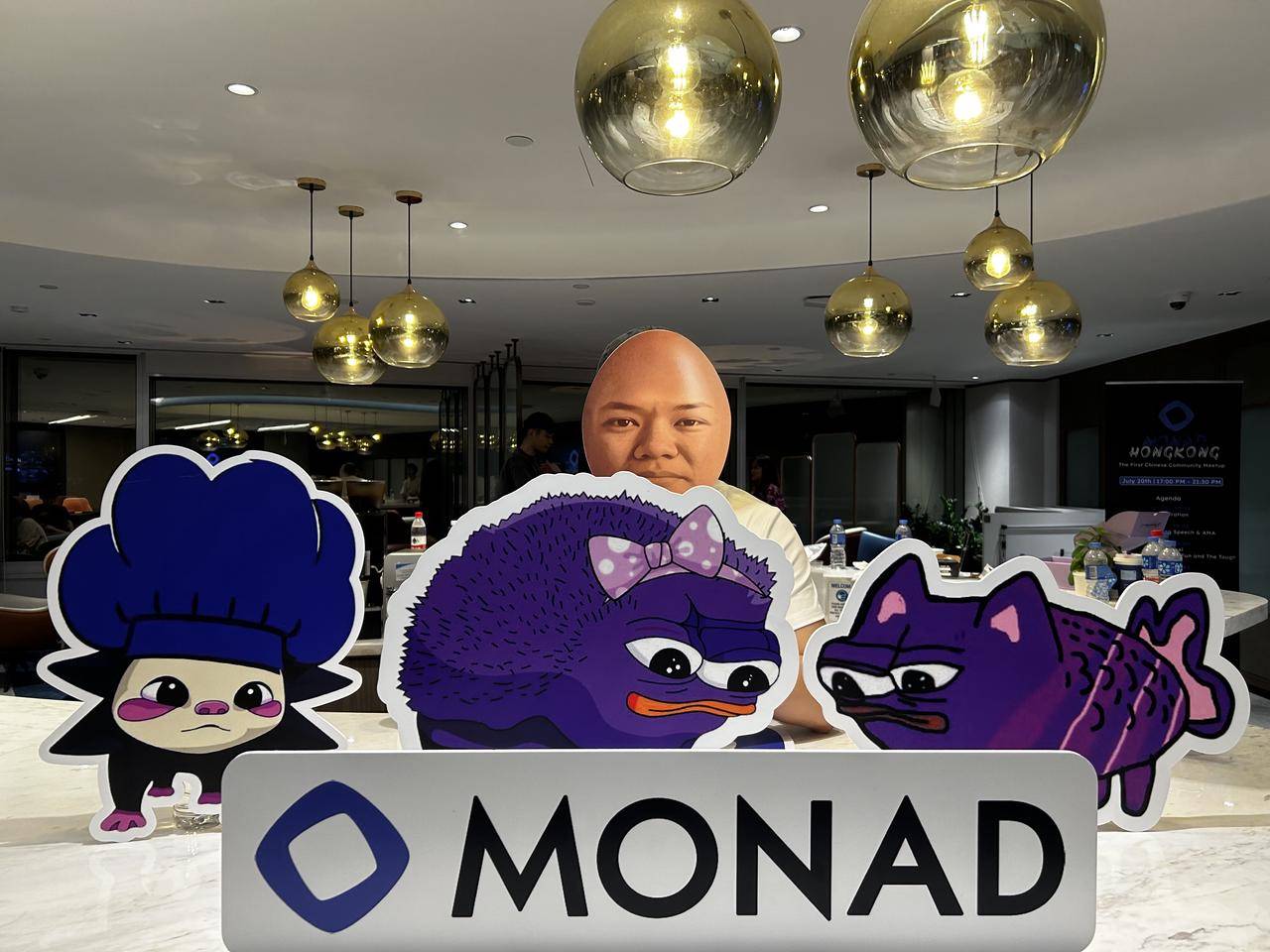
Monad APAC Lead SungMo gave a speech, comprehensively analyzing Monad from the perspectives of technology, community, and developer ecology. The following are the editor’s notes as a community member.
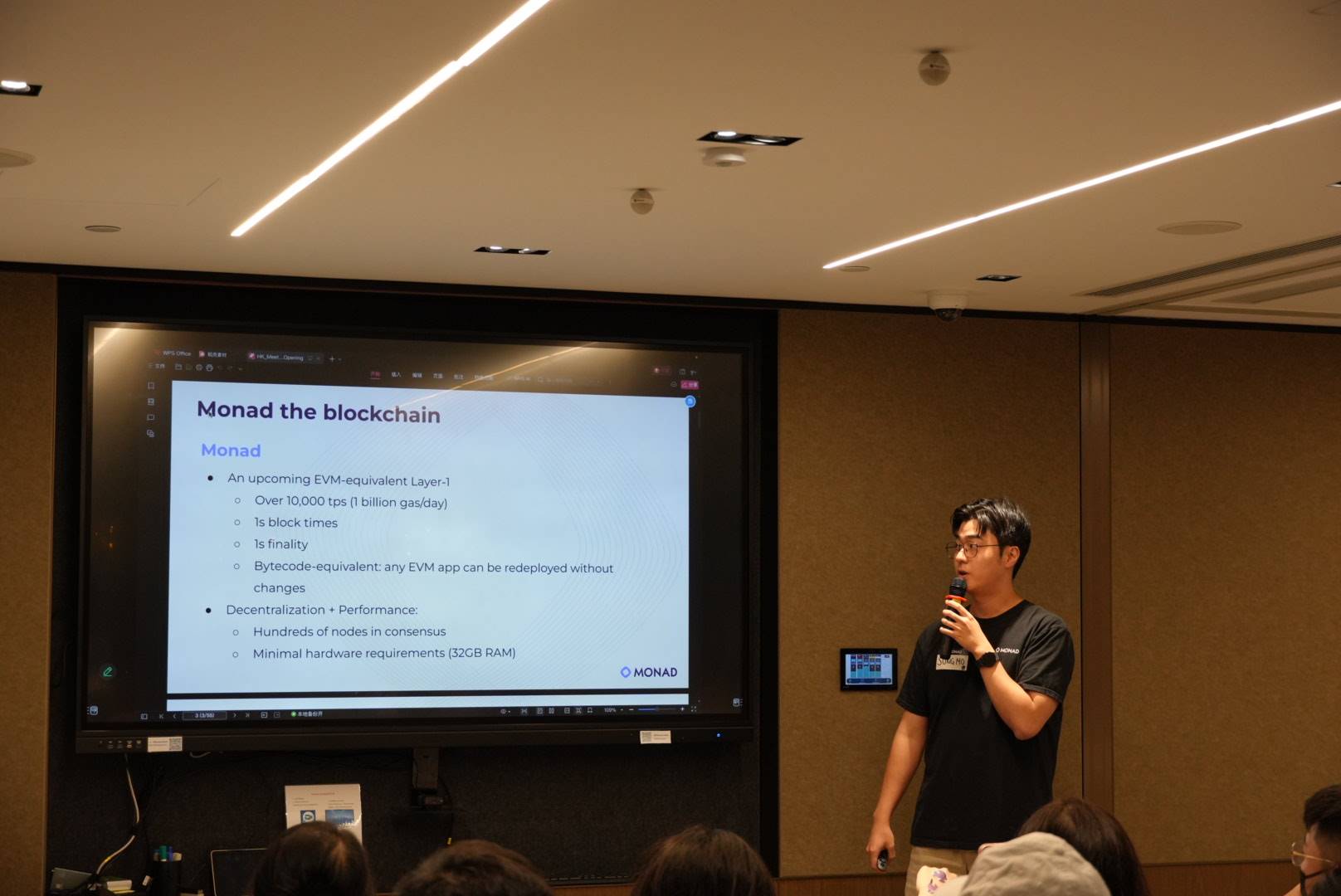
technology
When talking about Monad, the first thing that comes to mind may be a technical term - parallel EVM. At present, Monad seems to have become the spokesperson for this technology. However, it is not easy to achieve a transaction throughput of more than 10,000 per second, a block time of 1 second and full compatibility with EVM. Monad is technically composed of the following details:
1. Asynchronous execution (delayed execution)
In traditional blockchain systems, all nodes need to complete the sorting and execution of transactions within each block, which means that most of the time in a block is spent on reaching consensus between nodes, and very little time is actually spent on executing transactions.
Monad separates consensus and execution to improve performance, specifically:
Consensus phase : All nodes first agree on the order of transactions, but do not execute them immediately.
Execution phase : Nodes independently execute these sorted transactions in subsequent blocks.
This has several benefits:
Improve efficiency : Since consensus and execution are separate, it is possible to perform previously ordered transactions in another block while consensus is being performed in one block, thus making full use of block time.
Increased throughput : More time is available to execute transactions, so more transactions can be processed per block.
Lower latency : Because execution is done independently, nodes can process transactions faster, thus reducing transaction confirmation time.
2. Parallel Execution
In traditional blockchain systems, transactions are executed one by one in sequence, which is like queuing up to buy tickets. Everyone must wait for the person in front to buy before it is their turn. Although this method is simple, it is not efficient, especially when there are a large number of transactions to be processed.
Monad parallel execution uses a smarter approach, similar to selling tickets in multiple windows at the same time. Specifically:
Parallel processing of transactions : The system will process as many transactions as possible at the same time. This is like handling different customers at multiple windows at the same time.
Generate "pending results" : The input and output of each transaction will be recorded in a "pending result". Just like the results of each window processing will be temporarily recorded.
Check and submit : The system will check these pending results in the original order. If the input of a transaction has not changed during processing, the result of the transaction will be submitted; if the input has changed, the transaction will be re-executed. This is like checking each customer's ticket in order after all windows have been processed, and reprocessing if any problems are found.
Monad DB
In a blockchain system, each node needs to frequently access and update stored data (such as user balances, transaction records, etc.). Traditional storage systems may encounter performance bottlenecks when handling a large number of concurrent accesses.
MonadDb was designed to solve this problem. It is a custom database designed for storing blockchain state. It exploits the characteristics of modern solid-state drives (SSDs) to optimize data access and uses the latest asynchronous I/O technology to improve efficiency and performance.
MonadDb allows multiple transactions to access and update stored data simultaneously, unlike traditional systems that must wait for I/O results before processing the next transaction. With asynchronous I/O, the CPU can process other transactions without waiting for specific I/O results. This asynchronous approach greatly improves the efficiency of transaction processing while maintaining Ethereum compatibility.
Community
Although Monad has strong technical capabilities, one of the most frequently mentioned keywords at the Hong Kong event was community and MEME culture.
“Community is the Product”, the community itself is the product.
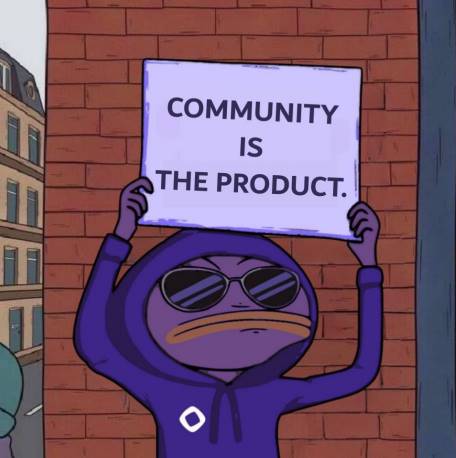
In Monad's view, the community has a powerful growth cycle path: build value in group chats - value beyond group chats - value attracts new members, and new members bring more value...
Although Monad has not yet been launched, it has already established a huge community, almost reaching a "cult-like" scale. On various platforms such as Twitter, you can often see the purple PEPE army.
Thanks to the strong and self-driven community power, Monad has formed a unique MEME and continues to evolve and iterate. From purple PEPE to Molandak, everything can be Monad.
Molandak is a unique "community pet" created by the Monad community. There are also Chog, Moyaki, Mouch... From the first day of their birth, they carry the purple Monad mark.
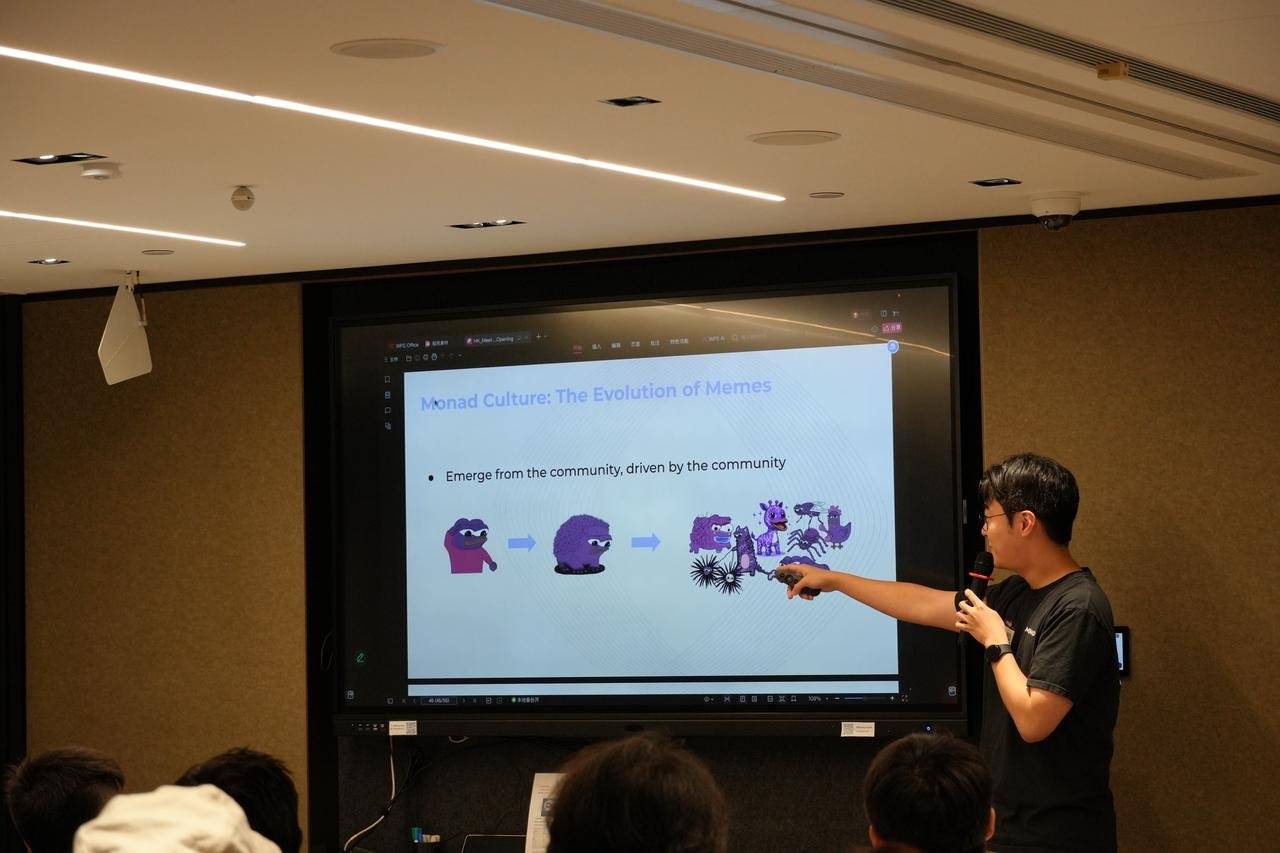
Not only MEME, Monad community members have also spontaneously produced a number of electronic music albums. You can listen to "10,000 TPS", "MONADING"...
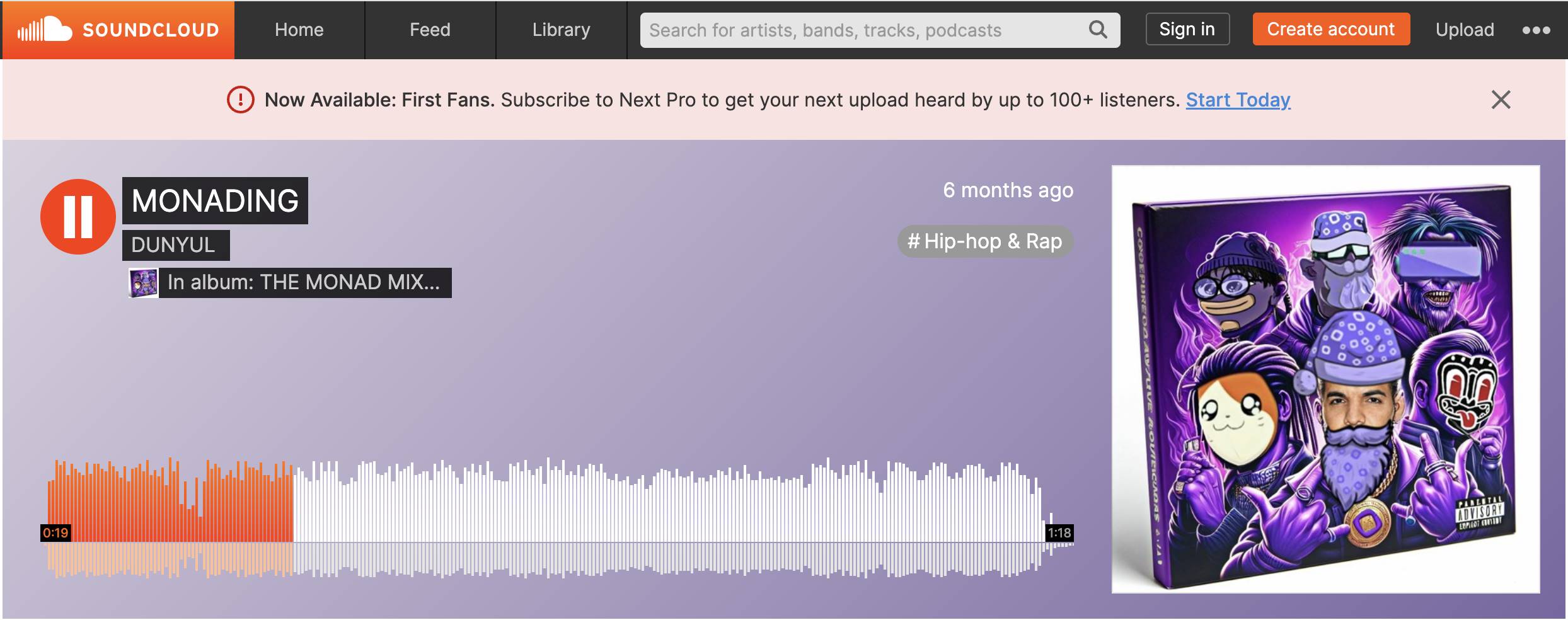 In the crypto market, it’s easy for the community and technology to fall into the chicken-and-egg discussion. However, if you’ve ever heard Keone or Eunice speak, you’ll realize that this is a very smart and articulate team.
In the crypto market, it’s easy for the community and technology to fall into the chicken-and-egg discussion. However, if you’ve ever heard Keone or Eunice speak, you’ll realize that this is a very smart and articulate team.
Technology is often boring and difficult to gain popular support, and all projects have the risk of not being as good as expected, which is why communities exist. When things get tough, especially in a bear market, the community is all a project really has.
At present, all crypto communities have gradually become "airdrop communities" driven by the expectation of airdrops, which is a growth factor, but it cannot be just the expectation of incentives. In the past, successful communities were driven by economic incentives. However, the most commendable thing about Monad's community building is that it has cultivated a real community before major product launches or token incentives. After all, Monad's test network has not yet been launched, and there are still more than 300,000 community members active in Discord.
Developer Ecosystem
As an L1, developers are crucial to Monad.
In June, Monad moved its developer event (The Foundry) directly to its New York office, thus creating The Foundry NYC.1.1, which is quite down-to-earth.
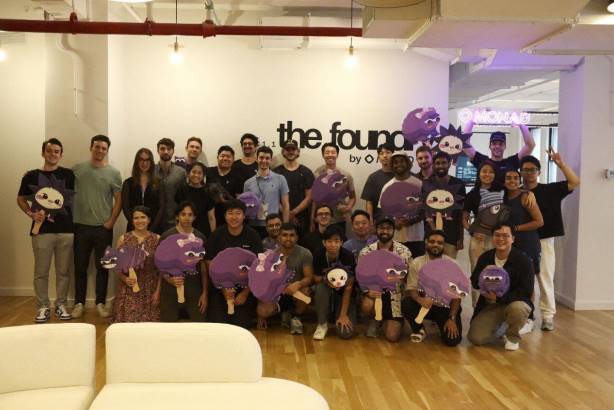
21 teams and 34 builders had one-on-one communication with Monad team members over a week, providing consulting and coaching on market entry strategy (GTM), financing, strategy, product design, code auditing, recruitment, community, etc., while also helping founders find potential investors and cooperation agreements.
At the Hong Kong event, several crypto project founders also shared their ideas and thoughts on what they want to build on Monad, including:
Curvance: A stablecoin lending protocol led by Wormhole with joint investments from Arbitrum and Frax.
Zomma Protocol: A decentralized derivatives protocol focused on building a range of innovative and diversified products, including staking, yield mining, buying and selling European options, settlement and minimum collateral
PoPP: A Web3 creator community application. PoPP uses blockchain technology to build users' personal metaverse social relationships, allowing everyone to issue programmable soul-binding tokens and non-fungible tokens to carry their social relationships, organizational relationships, equity certificates and works, so that everyone who contributes to the community can gain benefits and help users discover more valuable souls and content on the platform.
Narra: A fan-owned and community-led encrypted AI story world where users can become Narra trainers and through interaction, ZAI cubs will evolve into different characters in this gamified universe.
At the event, many developers expressed their interest in developing and building on Monad. One point worth noting is that they compared Monad to the next Solana and launched a new Ethereum challenge campaign, "Ethereum is bad, but EVM is good"!








